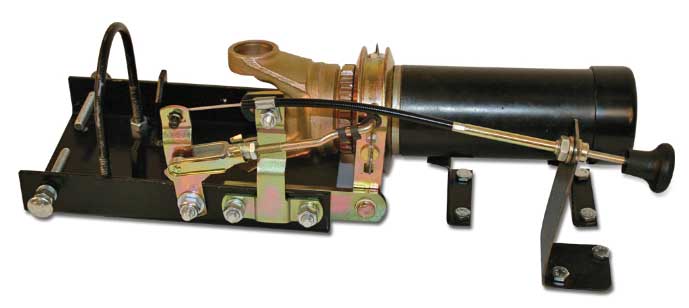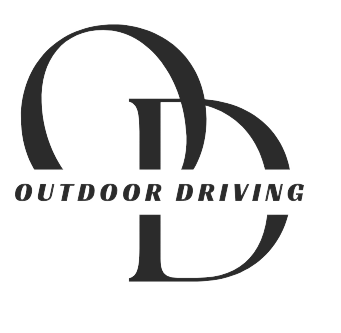The drive shaft is the large metal shaft that connects the engine to the wheels. When you are towing a vehicle, you will need to disconnect the drive shaft so that the engine does not turn the wheels. This can be done by removing the bolts that hold the drive shaft in place.
- Park the vehicle on a flat surface and block the wheels to prevent it from rolling
- Place a jack under the differential housing and raise the vehicle until the drive shaft is clear of the ground
- Support the drive shaft with a jack stand to prevent it from falling when you disconnect it from the differential
- Loosen, but do not remove, the bolts that secure the drive shaft to the differential using a wrench or socket set
- Pull the drive shaft away from the differential and lower it to the ground
Towing Without Removing Drive Shaft
If your vehicle breaks down and you need to tow it, you may be wondering if you can do so without removing the drive shaft. The answer is yes, but there are a few things you need to know first.
First, make sure the towing company knows that the drive shaft is still attached.
They’ll need to use a different type of dolly or platform in order to avoid damaging it. Second, the vehicle will need to be towed in neutral with the parking brake disengaged. And finally, be prepared for a slower tow since the drive shaft will still be turning while your vehicle is being pulled.
With these things in mind, towing without removing the drive shaft is certainly possible. Just be sure to let the professionals know about it beforehand so they can properly prepare and avoid any damage.
How to Remove Drive Shaft from Rear Differential
Assuming you would like a blog post discussing how to remove a drive shaft from a rear differential:
“How to Remove Drive Shaft from Rear Differential”
Have you ever needed to replace a driveshaft or U-joint on your car or truck?
If so, then you know that it can be quite the process. But removing the drive shaft from the rear differential is actually not too difficult, as long as you have the right tools and know-how. Here’s a quick guide on how to do it:
1. First, disconnect the negative battery cable to prevent any electrical shorts.
2. Next, support the rear end of the vehicle with jack stands and block the front wheels so it doesn’t roll away while you’re working.
3. Locate the driveshaft at the rear of the vehicle and follow it until you find where it connects to the differential.
There will likely be two bolts holding it in place – one at the top and one at the bottom. Use a socket wrench to remove these bolts (be sure to note which way they were facing so you can put them back in correctly). With both bolts removed, gently pull out the driveshaft until it’s free from the differential.
You may need to wiggle it around a bit to get it loose.
4. And that’s all there is to it! Now just reverse these steps when installing your new driveshaft/U-joint and you’ll be good as new in no time.
Drive Shaft Disconnect for Flat Towing
If you’re an RVer, then you know that one of the best ways to flat tow your vehicle is with a drive shaft disconnect. This simple device allows you to quickly and easily disconnect your drive shaft from your transmission, so that your vehicle can be towed without any risk of damage.
There are a few different types of drive shaft disconnects on the market, but they all essentially work in the same way.
To use one, simply park your RV in front of your vehicle and align the two so that the drive shaft is directly in line with the transmission output shaft. Then, engage the locking mechanism on the drive shaft disconnect (usually a lever or handle), and voila! Your vehicle is now ready to be flat towed.
When you’re ready to hit the road again, simply reverse the process and re-connect your drive shaft. It’s really that easy!
Drive shaft disconnects are an essential piece of equipment for anyone who plans on flat towing their vehicle behind an RV, so if you don’t have one yet, be sure to pick one up before your next trip.
How Much Does a Drive Shaft Disconnect Cost?
If you’re driving a Jeep Wrangler, then you know that the drive shaft disconnect is an essential part of the vehicle. But what exactly is a drive shaft disconnect, and how much does it cost? Here’s everything you need to know about this important Jeep Wrangler component.
What is a Drive Shaft Disconnect?
The drive shaft disconnect (DSD) is a locking mechanism that allows the front and rear halves of the Jeep Wrangler to be disconnected from each other. This allows the Jeep to be driven in two-wheel drive mode when off-road conditions don’t require four-wheel drive.
The DSD can also be used to prevent damage to the drive train components when one wheel becomes stuck in mud or snow.
How Does it Work?
The DSD consists of two parts – a collar that fits around the driveshaft and a locking pin that goes through both halves of the driveshaft.
When engaged, the locking pin prevents the front and rear halves of the driveshaft from rotating relative to each other. This effectively disengages the 4WD system, allowing only 2WD operation.
To engage the DSD, simply insert the locking pin through both halves of the driveshaft until it locks into place.
To disengage, simply remove the pin and allow both halves of the driveshaft to rotate relative to each other again. It’s that easy!
Why is it Important?
As we mentioned before,the DSD is essential for proper operation of your Jeep Wrangler in 2WD mode on dry pavement. Without it, your 4WD system will remain engaged even when you don’t need or want it, leading to increased wear and tear on your driveline components. Additionally, if one wheel becomes stuck while 4WD is engaged, engagingthe DSD will prevent damage to your driveshafts by allowing themto “slip” past each other rather than binding up and breaking something expensive!
Overall, using your DSD as intended will save you money in repairs downthe road by preventing unnecessary wear and tear on yourdriveline components. Of course, like anything else on yourJeep Wrangler, eventuallythe DSD itselfwill need toreplaced due tobnormal wearand tear – but thankfully they’re not too expensive!
Remove Drive Shaft Universal Joint
A drive shaft universal joint, or U-joint, is a flexible coupling between two rotating shafts that transmit power. The U-joint allows the shafts to angle relative to each other while still being able to rotate freely. Over time, however, the joints can wear out and require replacement.
Here’s a step-by-step guide on how to remove a drive shaft universal joint:
1. First, disconnect the driveshaft from the vehicle. This will usually involve removing bolts or screws that hold it in place.
2. Next, using a hammer and punch (or similar tool), carefully drive out the old U-joint cups from the yoke (the part of the driveshaft that connects to the wheels). Be careful not to damage the yoke in this process.
3. With the old cups removed, you can now press in new ones using a press (if available) or by pounding them in with a hammer.
Make sure they are seated fully before moving on.
4 greased up new U-joints and insert them into place in the yoke cups. Again, make sure they are seated all the way before proceeding.

Credit: www.rv.com
Do You Need to Disconnect the Drive Shaft for Towing?
When towing a vehicle, you will need to disconnect the drive shaft from the wheels. This is because when the vehicle is being towed, the drive shaft will not be rotating and can cause damage to the transmission.
How Do You Disconnect a Drive Shaft?
Assuming you would like a blog post discussing how to disconnect a drive shaft:
There are many reasons why you might need to disconnect a drive shaft. Maybe you’re doing some maintenance on your car and need to get to the differential, or maybe you’re replacing the entire drive train.
Whatever the reason, it’s not a difficult task. Here’s how to do it:
1. First, support the vehicle with jack stands so that it is level and secure.
You don’t want the vehicle falling off the jack stands while you’re working on it!
2. Next, locate the bolts that connect the driveshaft to the differential. There are typically four of them, and they can be found at either end of the driveshaft.
3. Using a wrench or socket, loosen and remove all four bolts. Be careful not to lose them – they may fall into an inaccessible place under your car!
4. With all four bolts removed, gently pull the driveshaft away from the differential until it is free from both sides.
You may need to wiggle it a bit to get it started, but be careful not to damage any surrounding components in the process.
Can You Tow Awd in Neutral?
Most AWD vehicles cannot be towed in neutral without damaging the transmission. This is because towing an AWD vehicle in neutral puts too much stress on the drivetrain, and can cause the transmission to fail. However, some newer AWD vehicles have a feature that allows them to be towed in neutral without damaging the transmission.
How Much Does a Driveline Disconnect Cost?
A driveline disconnect is a system that allows a vehicle to be driven without the driveline being connected. This can be useful for tow trucks or other vehicles that need to move a disabled vehicle without damaging the driveline. The cost of a driveline disconnect system will vary depending on the make and model of the vehicle, as well as the specific features included.
A basic system may cost around $500, while a more sophisticated system with additional features could cost up to $2000.
Drive shaft safety tip. Towing
Conclusion
If you’re planning on towing your car, you’ll need to disconnect the drive shaft first. Here’s a quick guide on how to do it:
1. Park your car in a safe place and set the parking brake.
Make sure the transmission is in neutral.
2. Place jack stands under the frame of your car and raise it up until the wheels are off the ground.
3. Find the U-joint at the end of the drive shaft and unscrew it using a wrench or socket set.
You may need to use a hammer to tap it loose if it’s stuck.
4. Once the U-joint is disconnected, lower your car back down to the ground and remove the jack stands.
